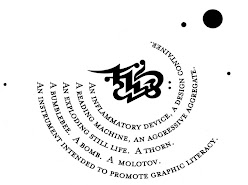Sitka Charley smoked his pipe and gazed thoughtfully at the POLICE GAZETTE illustration on the wall. For half an hour he had been steadily regarding it, and for half an hour I had been slyly watching him. Something was going on in that mind of his, and, whatever it was, I knew it was well worth knowing. He had lived life, and seen things. He had never learned to read nor write, but his vocabulary was remarkable.
We had struck this deserted cabin after a hard day on trail. The dogs had been fed, the supper dishes washed, the beds made, and we were now enjoying that most delicious hour that comes each day, and but once each day, on the Alaskan trail, the hour when nothing intervenes between the tired body and bed save the smoking of the evening pipe. Some former denizen of the cabin had decorated its walls with illustrations torn from magazines and newspapers, and it was these illustrations that had held Sitka Charley's attention from the moment of our arrival two hours before. He had studied them intently, ranging from one to another and back again, and I could see that there was uncertainty in his mind, and bepuzzlement.
"Well?" I finally broke the silence.
He took the pipe from his mouth and said simply, "I do not understand."
He smoked on again, and again removed the pipe, using it to point at the POLICE GAZETTE illustration.
"That picture - what does it mean? I do not understand."
I looked at the picture. A man, with a preposterously wicked face, his right hand pressed dramatically to his heart, was falling backward to the floor. Confronting him, with a face that was a composite of destroying angel and Adonis, was a man holding a smoking revolver.
"One man is killing the other man," I said, aware of a distinct bepuzzlement of my own and of failure to explain.
"Why?" asked Sitka Charley.
"I do not know," I confessed.
"That picture is all end," he said. "It has no beginning."
"It is life," I said.
"Life has beginning," he objected.
I was silenced for the moment, while his eyes wandered on to an adjoining decoration, a photographic reproduction of somebody's "Leda and the Swan."
"That picture," he said, "has no beginning. It has no end. I do not understand pictures."
"Look at that picture," I commanded, pointing to a third decoration. "It means something. Tell me what it means to you."
He studied it for several minutes.
"The little girl is sick," he said finally. "That is the doctor looking at her. They have been up all night - see, the oil is low in the lamp, the first morning light is coming in at the window. It is a great sickness; maybe she will die, that is why the doctor looks so hard. That is the mother. It is a great sickness, because the mother's head is on the table and she is crying."
"How do you know she is crying?" I interrupted. "You cannot see her face. Perhaps she is asleep."
Sitka Charley looked at me in swift surprise, then back at the picture. It was evident that he had not reasoned the impression.
"Perhaps she is asleep," he repeated. He studied it closely. "No, she is not asleep. The shoulders show that she is not asleep. I have seen the shoulders of a woman who cried. The mother is crying. It is a very great sickness."
"And now you understand the picture," I cried.
He shook his head, and asked, "The little girl - does she die?"
It was my turn for silence.
"Does she die?" he reiterated. "You are a painter-man. Maybe you know."
"No, I do not know," I confessed.
"It is not life," he delivered himself dogmatically. "In life little girls die or get well. Something happens in life. In pictures nothing happen. No, I do not understand pictures."
From THE SUN-DOG TRAIL , by Jack London.
skip to main |
skip to sidebar
Earlier posts:
-
▼
2006
(32)
-
▼
December
(32)
- THERE ARE TWO TYPES OF DRINKERS
- MORE BAT, LESS MAN
- THE TRUTH OF FREELANCING
- JOYEUX NOEL, CORTO
- BLACKBERRY
- BLACKLETTER 2
- BLACKLETTER
- BAT WINGS
- OMAC 2
- OMAC
- JACK KIRBY
- (THE PROBLEM) IN KNOSSOS
- ALEX TOTH
- HEINZ EDELMANN 2
- HEINZ EDELMANN
- DEADLINES
- SILVIO CADELLO
- PALM READING
- STRANGE HORSE
- A PICTURE WITHOUT BEGINNING OR END
- A RAREBIT FIEND
- MERKLEY
- BATMAN YEAR 100
- LVHRD BFLD
- CHELSEA HOTEL
- DIESEL GIRLS
- A PICTURE IS A SUM OF DESTRUCTIONS
- NAPOLEON ASTRONAUT
- EXCLUSIVELY EXKLUSIV
- POSTER ART
- GUY PEELLAERT
- THERE STILL IS ONLY KING KONG!
-
▼
December
(32)
